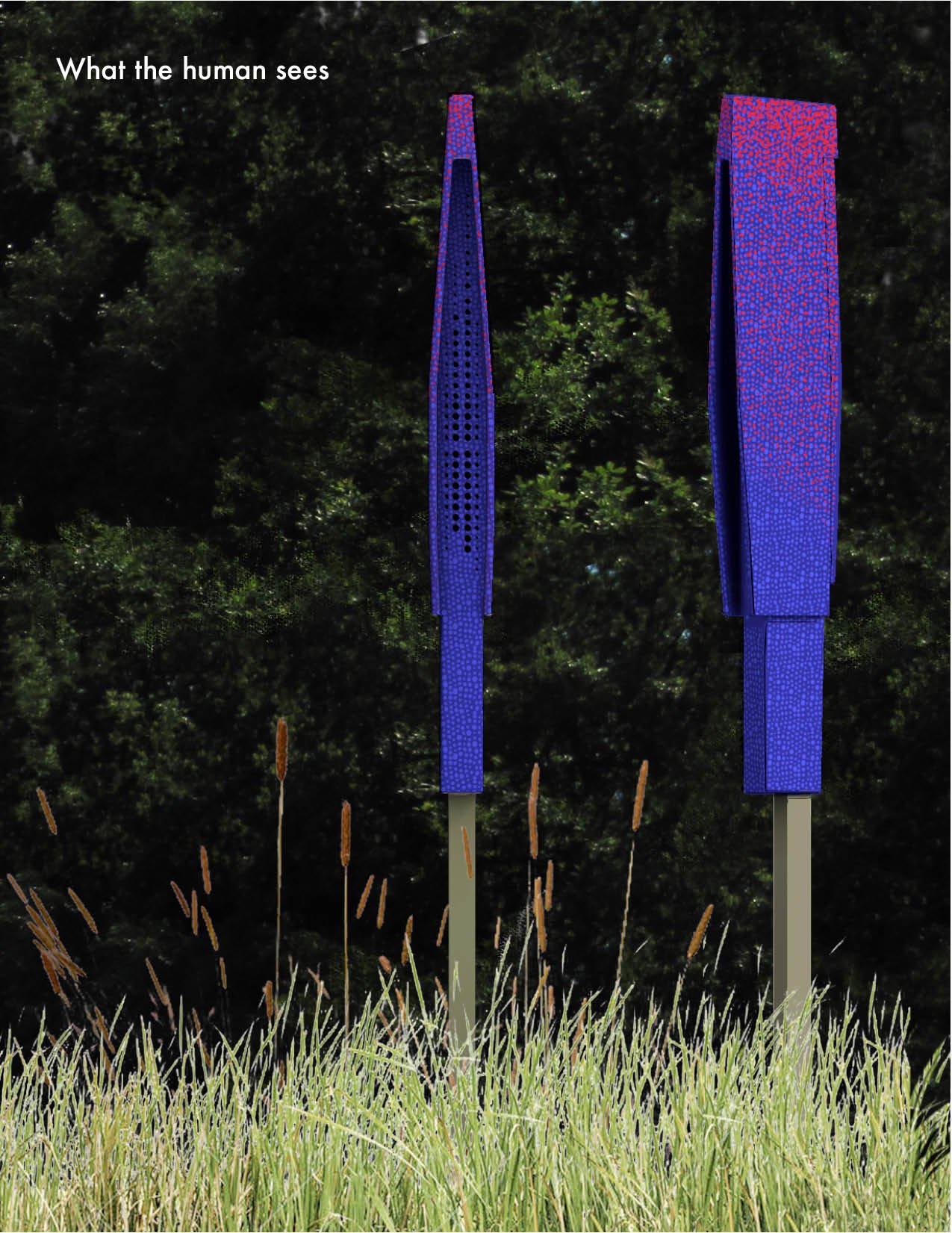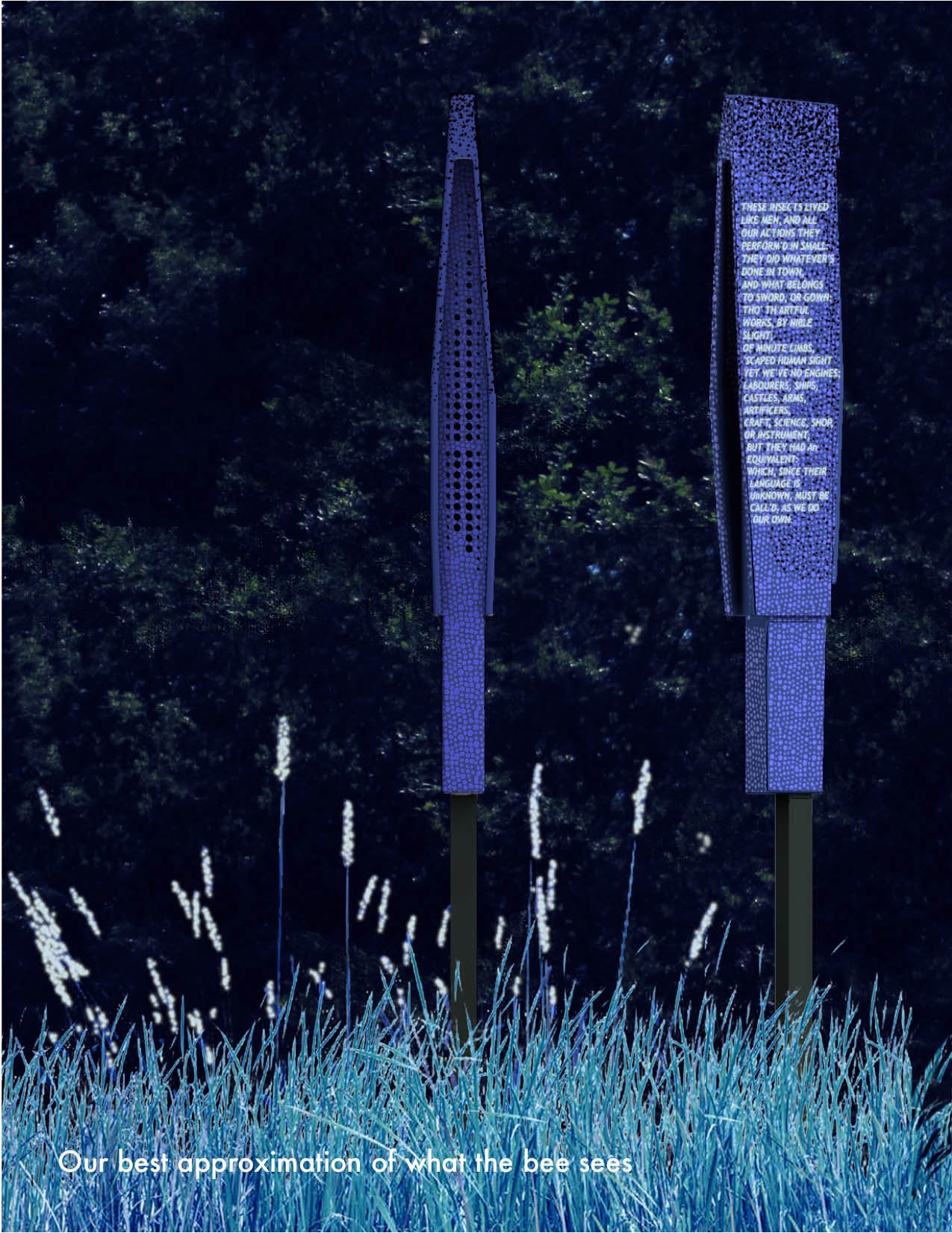Knaves Turn’d Honest
Winning submission to the Bee House Design Competition, part of the interdisciplinary Bee/House/Lab initiative at the University of Manitoba.
Year: 2016
Team: Anca Matyiku and Chad Connery
Publications: Bee/House/Lab, OCDI Press, 2016.
The “Knaves turn’d Honest” beehouse explores the crossovers and slippages of (im)perceptible communication between humans and solitary bees. It operates as a sign-post inscribed with layers of information that either favour or deny the sensory apparatus of both bees and humans.
A broken pattern of indigo dominates the surface in order to titillate its future inhabitants. Invisible to the bees, a speckled red peak makes it easy to spot across the field by its human caretakers. To further appeal to pollinator communities, a layer of transparent ultra-violet reflective paint is stencilled onto the sides to simulate the glow of pollen dust. As a playful but probing gesture, this layer – only perceptible to humans by way of specialized instruments – is actually inscribed with an excerpt of text from Bernard Mandeville’s poem “The Grumbling Hive, or Knaves turn’d Honest.” It was part of Mandeville’s “Fable of the Bees; or Private Vices, Publick Benefits”, a controversial theory of economics, first published anonymously in the early eighteenth century. It anticipates the “invisible hand” theory and builds an allegory of the hive in order to suggest that the satisfaction of private desires contributes to cultural growth that benefits society at large.




